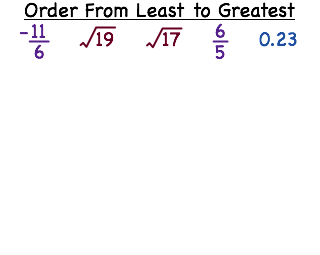

This hints at the fact that we can precisely denote only a few, selected real numbers with finitely many symbols. They may be expressed by decimal representations, most of them having an infinite sequence of digits to the right of the decimal point these are often represented like 324.823122147., where the ellipsis (three dots) indicates that there would still be more digits to come. Real numbers can be used to express measurements of continuous quantities.The complements of all these sets (irrational, transcendental, and non-computable real numbers) in the reals are all uncountably infinite sets. There is a hierarchy of countably infinite subsets of the real numbers, e.g., the integers, the rational numbers, the algebraic numbers and the computable numbers, each set being a proper subset of the next in the sequence.This establishes that in some sense, there are more real numbers than there are elements in any countable set. The real numbers make up an infinite set of numbers that cannot be injectively mapped to the infinite set of natural numbers, i.e., there are uncountably infinitely many real numbers, whereas the natural numbers are called countably infinite.The sum and the product of two non-negative real numbers is again a non-negative real number, i.e., they are closed under these operations, and form a positive cone, thereby giving rise to a linear order of the real numbers along a number line.Any non- zero real number is either negative or positive.For details and other constructions of real numbers, see construction of the real numbers. ) converges to a unique real number-in this case π. The real numbers can be constructed as a completion of the rational numbers, in such a way that a sequence defined by a decimal or binary expansion like (3 3.1 3.14 3.141 3.1415. The real numbers include all the rational numbers, such as the integer −5 and the fraction 4/3, and all the irrational numbers, such as 2, see Tarski's axiomatization of the reals.Ĭonstruction from the rational numbers The adjective real in this context was introduced in the 17th century by René Descartes, who distinguished between real and imaginary roots of polynomials. In mathematics, a real number is a value of a continuous quantity that can represent a distance along a line (or alternatively, a quantity that can be represented as an infinite decimal expansion).


 0 kommentar(er)
0 kommentar(er)
